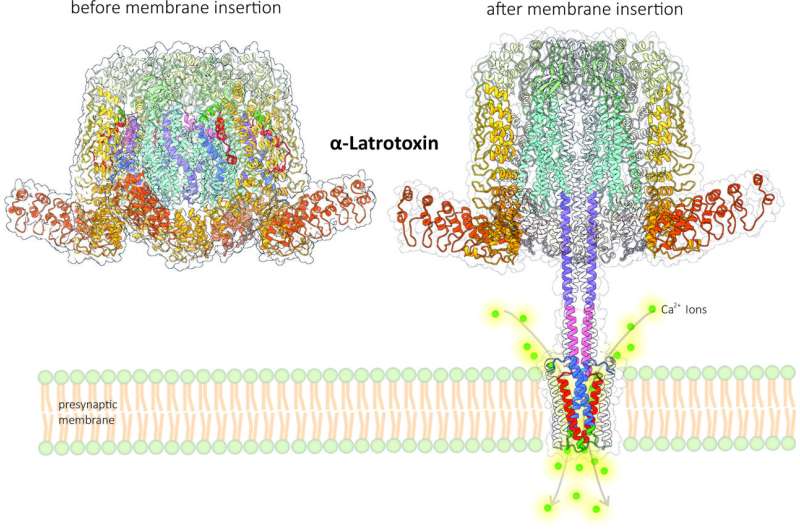Researchers at the University of Münster have made a breakthrough in understanding the complex mechanism behind the black widow spider’s deadly venom. Their findings, published in Nature Communications, shed light on how the toxin, known as α-latrotoxin, targets the nervous system and triggers severe muscle contractions in humans. This discovery could lead to the development of improved antidotes and new biopesticides, presenting exciting possibilities for future applications.

Deciphering the Deadly Cocktail
The black widow spider is best known for the venom it releases, a potent brew of seven neurotoxins. On toxic genes, α-latrotoxin is known to be dangerous for most vertebrates (including humans).
Researchers working at the University of Münster have now, with methods that include cryo-electron microscopy and molecular dynamics simulations, followed in minute detail how this toxin attack mechanism works and which structures it takes in doing so. What they found was that when α-latrotoxin is attached to the synapses (the junctions between nerve cells or between nerve cells and muscles) at its specific receptors, it changes astoundingly. A part of the toxin molecule makes up a stalk that inserts through the cell membrane making a small opening, which is used as a calcium channel. This opens the gate and lets calcium ions from the outside in, overloading the presynaptic membranes of nerve cells and forcing them to release massive amounts of neurotransmitters causing strong muscle contractions and spasms.
A Highly Complex yet Targeted Mechanism
This is a much more complex and distinctive mode of action compared to all other known toxins, the researchers said. The toxin incredibly complexly mimics the function of presynaptic membrane calcium channels, meaning that when Zinpyr-1 is added to the medium (instead of a real neurotransmitter), the blocker will still find and bind it.
Molecular dynamics simulations showed that the pore of the toxin’s calcium channel contains a side-based selectivity gate. This results in calcium ions entering the cell via a specific route rather than simply diffusing randomly, out of control. This mechanism of specificity spatiotemporally is what renders the α-latrotoxin so potent as a neurotoxin against vertebrates, but still active on insects or crustaceans.
Unlocking the Potential of Black Widow Venom
Results from the other recent study at the University of Münster reveal broad opportunities for applications of venom from the black widow. Latrotoxins, which include α-latrotoxin as their representative toxin type, are a class of toxins with significant biotechnological promise.
It may be the development of more effective antidotes and treatments for paralysis, or new biopesticides. Here we explore the potential of a closer look at insect-specific latrotoxin structure, to set the stage for such studies:
The new findings present a vast array of applications potentially involving latrotoxins, having great biotechnological promise by “offering the potential to develop enhanced antidotes, paralysis treatment, and novel biopesticides,” according to Gatsogiannis. The discovery of a key mechanism in which the black widow toxin works could have broader implications for human health and agriculture as well.
